Crop cafeterias, while generating evidence about varietal performance can also be a platform that connects different stakeholders in the seed value chain, and support large scale promotion of new varieties. In this blog, Swati Nayak and Mosharaf Hossain share their experiences from promoting IRRI’s crop cafeterias in Odisha.
CONTEXT
The development of climate resilient rice varieties is a successful outcome of various breeding programmes under the agriculture research for development initiative over the last decade. These varieties have yield advantage under stress conditions and no reported yield penalty under normal conditions (in comparison to a similar farmer variety). Therefore these varieties can reduce the vulnerability of millions of rice farmers by stabilizing productivity and ensuring food security. Thanks to the community of breeders and scientists engaged in rice research, now there are several varieties with multiple stress tolerant traits, varied duration, grain type, and yield rates. This in turn have given farmers many new options while choosing more appropriate varieties that suit their specific circumstances.
In order to make choices, farmers need to be aware, sensitized, and motivated to grow these varieties. To achieve large scale impact, we need to ensure large scale promotion of these varieties and guarantee adequate availability and access to the seeds of these varieties. Rice seeds are affordable to most farmers as often these seeds are subsidized by the government. However, there are other challenges in making sure that adequate quantities of these seeds are made available at the right time. This requires an established acceptance of the variety as well as a sustained production-supply chain for the same. In order to influence the adoption behavior of farmers by addressing each of the factors leading to that, the eastern Indian state of Odisha is witnessing an innovative extension approach. Popularly known as evidence hubs (or more precisely ‘varietal cafeterias’), these platforms are much more than that.
An Evidence Hub – a relatively newer knowledge platform – is meant to exhibit multiple crops/varieties as well as to analyse their performance under different management or ecological conditions. However, their reach is often limited to more scientific evaluation, ignoring the link that could be established with community/user groups as well asthe market at large. The new generation evidence hubs promoted by the International Rice Research Institute (IRRI) in the Indian state of Odisha have the potential for changing the overall purpose and impact of such knowledge platforms (Box 1).
These platforms, furthermore, are enriched with the additional concepts of experiential/comparative learning, participatory discussions, and stakeholder engagement for varietal evaluation, selection and promotion. Acting as a platform for hosting multiple rice varieties, this also incorporates the entire process of evaluation and generation of recommendations. These hubs serve the broader goal of strengthening the seed market for newer varieties by creating policy level triggers and recommendations generated through formal institutions of influence such as the Department of Agriculture, State Seed Corporation, etc.
EVIDENCE HUBS- What is New?
These new generation evidence hubs are different from the traditional ones because of the integrated event for varietal evaluation and generation of rankings (Table 1).
Table 1: OFTs vs Evidence Hubs
Characteristic |
On farm trials (OFTs) |
Evidence Hubs (EHs) |
| Hosting | Primarily done in farmer fields, hosted by individual farmers or KVK farms | Can be done in departmental farms, community land, farms of research institutes, and private institutions. |
| Lay out | It varies based on the objective. Could be demonstration of a single technology or a comparative evaluation with treatment vs control plots | It is focused on comparative evaluation. Multiple technologies (varieties here) are put up for evaluation in sub-plots (treatment and control). |
| Number of technology | Number of technologies tested are limited | It can be large in number with multiple sub-plots and replication plots in place. |
| Data and information | Data/information collected are primarily scientific | Data/information collected are scientific, as well as discussion/insight based |
|
Participation method
|
Largely individual (farmer and lead scientist) | Group based/collective |
| Evaluation methods | Based on measured data | Observation, measurement and feedback based. Use of scoring technique |
| Data triangulation/ Validation | One trial doesn’t have much scope for data triangulation | One evidence hub with several replication plots for each variety has the potential for data triangulation and validation. |
| Stakeholders engaged | Farmers, scientists/extension agents | Farmers, private& public institutions, researchers, delivery agents, key market players, extension agents |
| Extension sector | Widely known concept in public extension domain | More popular among research institutions, private institutions or extension agencies |
| Events | Not mandatorily organized or integrated with laid-out trials | Participatory evaluation event or varietal expositions are essentially integrated into the trial |
| Risks | The risk of failure and damage to trial plot is higher | The risk of failure is minimized with alternative replication plots |
| Immediate outcomes | Technology performance evaluation | Technology evaluation, promotion and demand creation |
Stakeholders
Known as EH events, these engage many of the important stakeholders in a more strategic and participatory manner with the broader objective of creating demand and market for new (or lesser known) varieties. Therefore, it is important that the stakeholders invited to the evaluation and selection event represent the entire seed value chain, which includes seed producers, suppliers, distributors and consumers. Apart from that, in order to influence the market dynamics, and the scenario of decentralized multiplication programmes in the state, inclusion of policy makers (or influencers) are also critical. The stakeholders engaged can be categorized into five major categories, in keeping with their own interest and influence level in the entire process as well as in the technology (read variety).
The five categories of stakeholders actively participate through a major and essentially integrated event. They go through three different sessions during this event involving the principles of classroom learning, field visit and observation, and follow-up discussion in groups. The stakeholders are familiarized with the objective and criteria of evaluation, and various non-visible traits of new varieties, and the layout of the EH. Then follows a complete tour of the EH, allowing them to visit multiple replication plots to observe, evaluate and validate their findings as well as perceptions. The follow-up group discussion gives them an opportunity to have a critical discussion and arrive at ratings or priority ranking of varieties in a more participatory manner.
This generates not only scores/feedback for all the listed varietiesand critical traits for each variety but also the overall rank of the preferred variety for a particular locality. The score sheets are validated, acknowledged, and authorized by the District Director of Agriculture, who also participates as the key observer of the entire process and discussion and also gives his/her insights. These score sheets, collected from different districts or regional EHs,give the state functionary an overview of the localized demand and variations across districts. This also helps state functionaries to collate common varieties on demand or specific demands, and thereby prioritize the seasonal seed procurement or production based on resource and feasibility. Any non-released varieties evaluated as promising, also get an opportunity for policy intervention or dialogues that can then accelerate the release of the same in the state.
THE PROCESS AND COMPONENTS OF EVIDENCE HUBS
1. Establishment of the Hub
Site Selection: To host an Evidence Hub, an ideal location is selected which could be strategic in terms of visibility and management. The ideal size of an EH should be one acre, making it an easily doable intervention at any suitable location. However, priority is given to departmental farms, which ensure a continuous engagement of local agriculture extension functionaries from the stage of lay out till plant establishment, along with basic infrastructure support and monitoring. Farms of private agencies or research institutions are other good options. At a few places, the community managed/farmer hosted EH has also been successful, and worth studying.
Varietal Selection: Newly released or lesser known climate resilient varieties are tested against several local checks which are popular (old or new). Each cafeteria hosts a total varietal portfolio ranging from15-20. Ecological suitability is taken into consideration while selecting new varieties, e.g., drought resistant varieties for upland areas and submergence tolerant varieties for lowlands.
Crop Establishment: A staggered sowing practice is followed to coincide with the flowering and panicle initiation of all varieties for better comparison of visible traits.Three replication plots are allocated for each variety and each replication plot can be randomly positioned at any location of the site. This helps in generalizing the trait/performance of the variety by observing all three plots.
Scheduling of Cafeteria Event: The event is scheduled when the cafeteria is almost ready to harvest but not harvested yet. This gives stakeholders an opportunity to analyse multiple observable traits, and not just the yield. This also reduces the bias which stakeholders could have after measuring or knowing the exact yield. However, each plot is subjected to crop cutting so as to validate the findings and make state-level recommendations for final production planning.
2. Varietal Evaluation and Selection
A scorecard is designed for each cafeteria. This consists of a set of 15-20 varieties which are evaluated in the platform. Several key traits that can influence adoption as well as overall performance of the varieties are listed against the varieties. The traits are kept similar across all varieties for comparison.
Some of the traits remain as visible traits which can be evaluated on the field through observation whereas some traits are explained during orientation, e.g., duration of the varieties. For traits, participants give direct score or feedback (like/dislike; more or less, etc.). The scoring is done on a 1-10 scale. After observing each trait, they are asked to give overall score to the variety(1 being the lowest score and 10 being the highest). Individual participants or a small group of participants travel across all the replication plots guided by a layout map and evaluate each of the varieties based on traits.
After the field observation and simultaneous discussion is complete, they gather in a room for a group discussion. This discussion triggers many negotiations, trade-offs and insights – coming from multiple stakeholders trying to influence as well as inform each other. At the end of a participatory discussion session, the group arrives at a consensus on final ranking and these are presented before the DDA. When there is any lack of consensus, DDA or seed production officers try to facilitate further discussion in order to arrive at a final decision. Later, the scorecard is signed and acknowledged by the DDA for formal recommendation to the state.
3. The Stakeholder Influence and Interest Matrix
The cafeterias are hosted with the objective of strengthening the seed system and market and not for merely integrating the concept of participation. In that sense it is important that the stakeholder influence and interest is analysed not just in the perspective of varietal evaluation and selection, but in the larger perspective of varietal adoption, scaling, and production.
LESSONS
With more than 40 cafeterias hosted in Odisha State, focusing on micro-ecology and geographies over the last few years (2016 onwards), the interest and influence of each stakeholder seems to be varied. Even for the same stakeholder, it varies from district to district. Also it is not always the case that one group of stakeholders is more influential than another. Within the same group you may find individuals and institutions who have relatively higher influence or interest in the entire process.
For a crop cafeteria to reach its primary objectives, one of the most influential stakeholders was found to be the Deputy Director, Agriculture (DDA), the district nodal authority in the Department of Agriculture in Odisha. A DDA can influence the state’s functionaries, and then in turn the state seed corporations and local seed production officers, to accept the highly-ranked variety and incorporate it in to the seasonal production/procurement plan. He has the power to incorporate these varieties across various district level programmes as well as accelerate dissemination of the same.
In the case of Odisha, the state seed corporation being one of the dominant suppliers of seed it is also a key player who has both direct influence and interest over production and scaling. It has the power to finalize seasonal production plans for districts and the state at large. Being engaged with this process of evaluation, they can get a deeper insight into varietal preferences and performance, which in turn would have direct incentives for sales volume and revenue. The other influential players are found to be local seed or agro input dealers. They have the direct motivation to promote a variety as demand can turn into revenue for them. Apart from that, traditionally, dealers have the farmers’ trust as they depend on the former for most farm advisories.
Primary Agricultural Co-operative Society (PACS), which are the public arm of input dealership for farmers, are also very popular institutions. However, with multiple parallel activities and limited support infrastructure, their interests are much broader and often not focused only on seed business or varietal promotion. However, they have a higher level of influence on farmer decision and spread of varieties in a region.
Farmers, farmer producer groups, local NGOs and many private seed entrepreneurs have also been observed to show immense interest in promoting such technology and accelerating the adoption and scaling of varieties. But in order to strengthen the seed system of a particular variety they have to rely on large scale production plans and supply chain through Odisha State Seeds Corporation (OSSC), their registered dealers, as well as the Department of Agriculture.
The inputs and technical insights from research institutes and subject matter specialists from KVK are important for evaluation and selection of varieties, but again their contributions towards strengthening local seed systems and large-scale scaling would be limited.
THE OUTCOMES AND RESULTS
The varietal portfolio of the cafeterias vary based on the host district, number of released/notified/developed new resilient varieties in a given year, the local popular varieties, ecological conditions, and past evaluation experiences. Though the combinations may vary, the basic principles remain the same.
The cost of an evidence hub varies between INR 75,000 to 100,000. However, based on the available land at the suitable location and the number of varieties available for comparison, the size of the hub can vary. This can affect the layout cost. The ideal land size for hosting an evidence hub is one acre; and the total numbers of varieties to be compared are 20. The cost of organizing the event might vary slightly based on the number of participants and location. This makes this intervention an approach which can be taken up by institutions who work for agriculture research for development and extension domain. This may be the Department of Agriculture, the National Agricultural Research and Extension System (NARES) institutions, private firms and their extension wings, and other public institutions.
Taking into account 2017’s crop cafeterias– 23 in number and most of them hosted on departmental farms – on average 20-25 varieties were compared per cafeteria. The lowland ecologies dominating coastal Odisha saw a larger number of varieties available for comparison than in the upland districts. The portfolio of varieties already being cultivated by farmers was seen to be quite popular, large in number, and some of them are being considered as mega varieties, having been grown for more than 20 years (e.g., Swarna). The ecologies in the coastal area are also varied – across shallow lowland, medium land, lowland, etc. The selection of new varieties to compare against the older ones took into account the factors for comparison (e.g., comparable duration/land type) for generating an effective varietal replacement strategy. The range of new varieties tested gave options for the stakeholders to pair with older ones, and compare and promote the most suitable ones for varietal replacement. For example, Swarna Sub 1, a flood tolerant variety can be a suitable replacement for the variety Swarna with similar duration and ecological suitability. However, promoting SwarnaSub1 to farmers who grow Lalat could be a wrong strategy. These strategic inputs were taken into consideration throughout the discussions that followed every evidence hub evaluation event.
The overall result (average scores) across the state of Odisha showed a preference for many new stress tolerant rice varieties (STRVs) over traditional or older varieties as evinced by the concerned stakeholder group.
The coastal areas witnessed the selection of varieties such as CR1009 Sub1, SwarnaSub1, BINA Dhan 11, and other climate resilient varieties over the older varieties like Swarna, Lalat, Samba Mashuri, and MTU 1010.
When validated with actual yield measurement through crop cuts, it was also observed that Swarna Sub 1 gave yield increase of 0.1 t/ha compared to Swarna under the same varietal duration category, thereby offering a great opportunity for varietal replacement in lowland areas. BINA Dhan11 gave better yield advantage as compared to the closest comparable old varieties like Lalat, MTU 1010, etc.
For the upland (medium upland) areas, resilient varieties like Sahabhagi Dhan, DRR 44, as well as BINA Dhan11 emerged as stakeholder-preferred varieties as compared to older varieties like MTU1010, Lalat, and many other resilient varieties.
Even though the crop cut data demonstrated BINADhan 11 as the best performing variety in terms of yield, followed by DRR44, a variety like Sahabhagi was rated highest overall. This indicates various trade-offs and regional suitability by the stakeholders while rating and selecting a variety.
This also indicated that large scale seed production, supply and promotion of a new variety is dependent on different market dynamics and potential demand. Regional stakeholders are in the best position to discuss and decide what would be the most appropriate variety catering to the maximum market and therefore can plan the production and procurement of the same.
Apart from that there were many varieties which were rated high by the stakeholders, e.g., the BRRI 75 (a variety developed in Bangladesh), however, due to the fact that this variety is yet to be released in the state, it was difficult to promote it directly for production. Conversely, this definitely triggered meaningful dialogues among policy makers and key stakeholders on releasing this variety in Odisha.
BINA Dhan 11, with potential as it is high yielding and a preferred variety across all zones, was picked up as the one common variety that can help in replacing many older varieties. The government, state seed corporations, as well as many private seed entrepreneurs have now started taking up the production and distribution of this variety at a considerable scale. Remarkably, by the end of 2018 the Odisha State Seeds Corporation, facilitated by IRRI, has taken up a significant move to multiply nearly 10 quintals of BINA Dhan 11 variety procured from Narendra Deva University of Agriculture and Technology (NDUAT), Faizabad. These strategic linkages have started to trigger the most significant changes in Odisha’s seed market.
THE ENVISAGED IMPACT
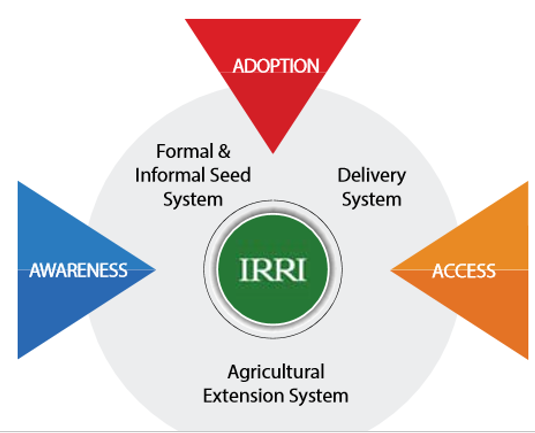 These platforms give an opportunity to create new linkages as well as strengthen existing ones. The experience combined with detailed insights, knowledge, and brainstorming coming from key stakeholders in the seed value chain makes it a more holistic approach. Primarily targeted to create demand and establish a market for new and potential resilient varieties, these tiny, localized cafeterias have been showing promising impact in the region. Actors – from delivery systems, formal as well as informal seed systems and agriculture extension systems–are collectively using their own influence, infrastructure and capacity to streamline the supply and production chain. The steady increase in procurement of breeder seed and multiplication of many climate resilient varieties, such as Shahabhagi Dhan, BINA Dhan 11, DRR 44 by both public and private seed agencies of the region marks the significant and strategic success that is the result of such efforts and consequential linkages.
These platforms give an opportunity to create new linkages as well as strengthen existing ones. The experience combined with detailed insights, knowledge, and brainstorming coming from key stakeholders in the seed value chain makes it a more holistic approach. Primarily targeted to create demand and establish a market for new and potential resilient varieties, these tiny, localized cafeterias have been showing promising impact in the region. Actors – from delivery systems, formal as well as informal seed systems and agriculture extension systems–are collectively using their own influence, infrastructure and capacity to streamline the supply and production chain. The steady increase in procurement of breeder seed and multiplication of many climate resilient varieties, such as Shahabhagi Dhan, BINA Dhan 11, DRR 44 by both public and private seed agencies of the region marks the significant and strategic success that is the result of such efforts and consequential linkages.
END NOTE
An Evidence Hub can be seen as a fresh shift from traditional extension approaches.It is a participatory and interactive knowledge platform which specifically focuses on market stakeholders. The market stakeholders in the seed sector includes a lot of public sector players who havea greater holdover the policy arena of state. The state seed corporations work very closely with the Department of Agriculture. The district/zonal level seed production officers representing seed corporations work very closely with public extension functionaries as well as private delivery agents like dealers. Together they can play a direct and decisive role in introducing, increasing or decreasing the production and circulation of specific seeds in the formal chain. These stakeholders, through their strong network of registered seed growers can also promote and incentivize the multiplication of new seeds. Institutions, like IRRI, ICAR-National Rice Research Institute (ICAR-NRRI) and other NARES bodies engaged in this process can strengthen the breeder seed linkage in the state – for multiplication and circulation of many new varieties. While being introduced to many new varieties, stakeholders are simultaneously evaluating and validating its performance and ecological suitability. In turn these stakeholders can influence policy makers to expedite release and notification of several such varieties in the state. With so many research institutions, private seed firms, and district agriculture offices holding a mandate, there are many programmes dedicated towards testing, promoting new varieties, and accelerating both varietal and seed replacement rate. Within this context such Evidence Hubs can be taken up as strategic interventions to promote, as well as create, demand for new high yielding varieties. Lastly, this approach can be replicated for other crops as well.
 Swati Nayak is the Lead Specialist, Seed & Delivery Systems, International Rice Research Institute (IRRI), India (Email: s.nayak@irri.org).
Swati Nayak is the Lead Specialist, Seed & Delivery Systems, International Rice Research Institute (IRRI), India (Email: s.nayak@irri.org).
 Mosharaf Hossain is the Monitoring &Evaluation Specialist, Seed & Delivery Systems, IRRI, India (Email: s.hossain@irri.org).
Mosharaf Hossain is the Monitoring &Evaluation Specialist, Seed & Delivery Systems, IRRI, India (Email: s.hossain@irri.org).

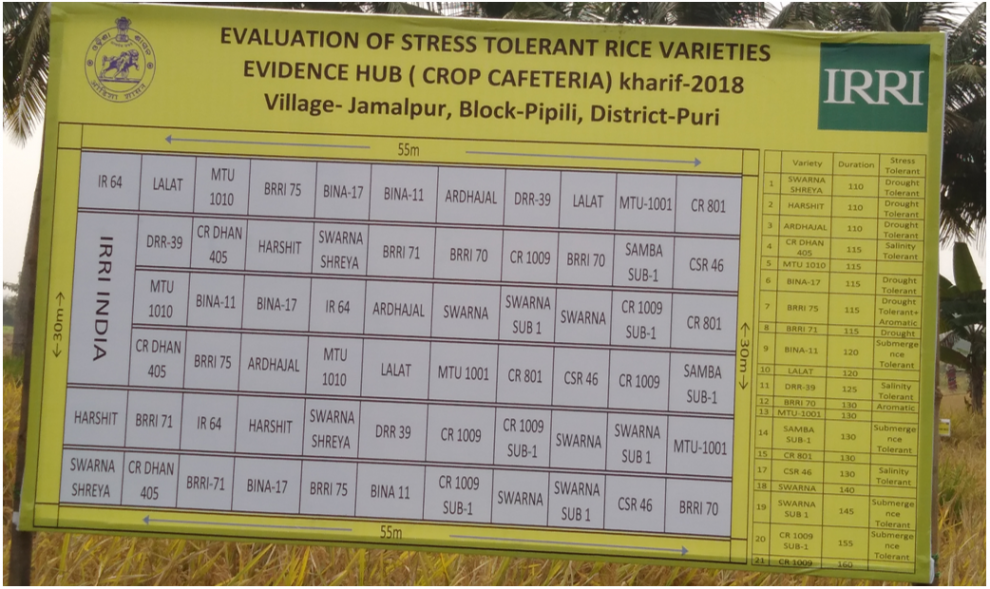
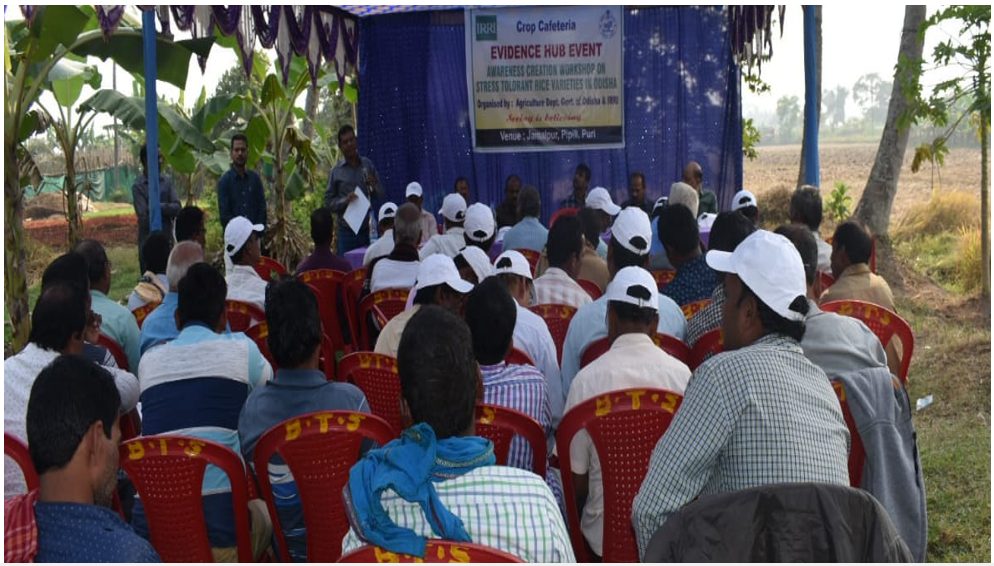

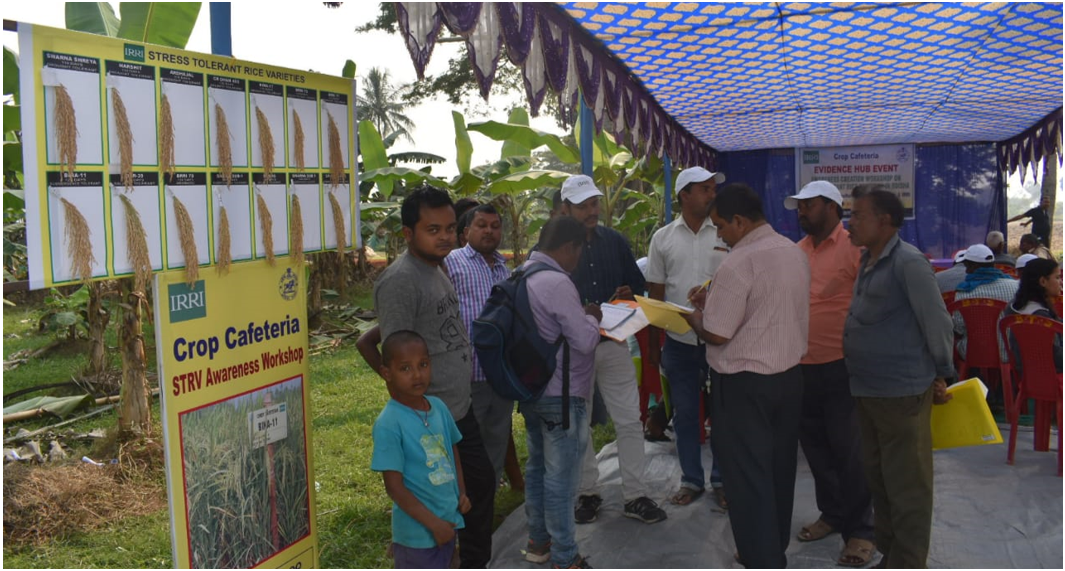
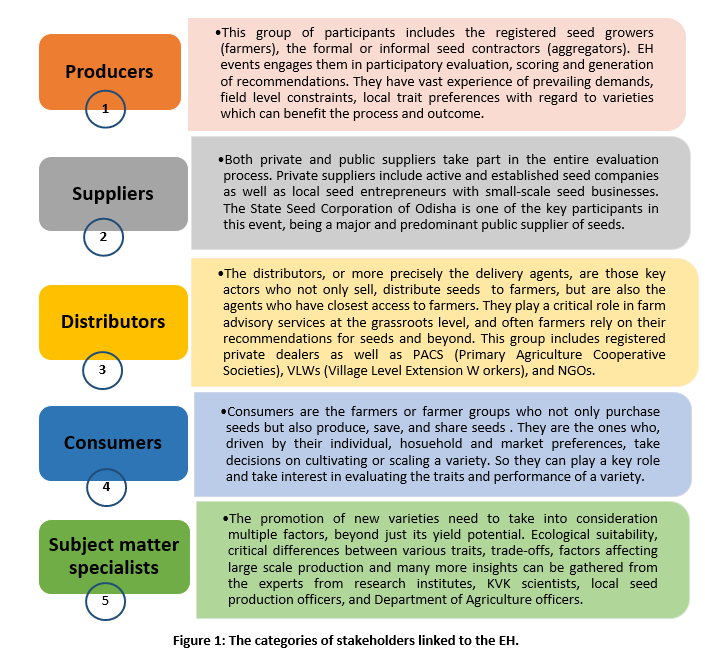
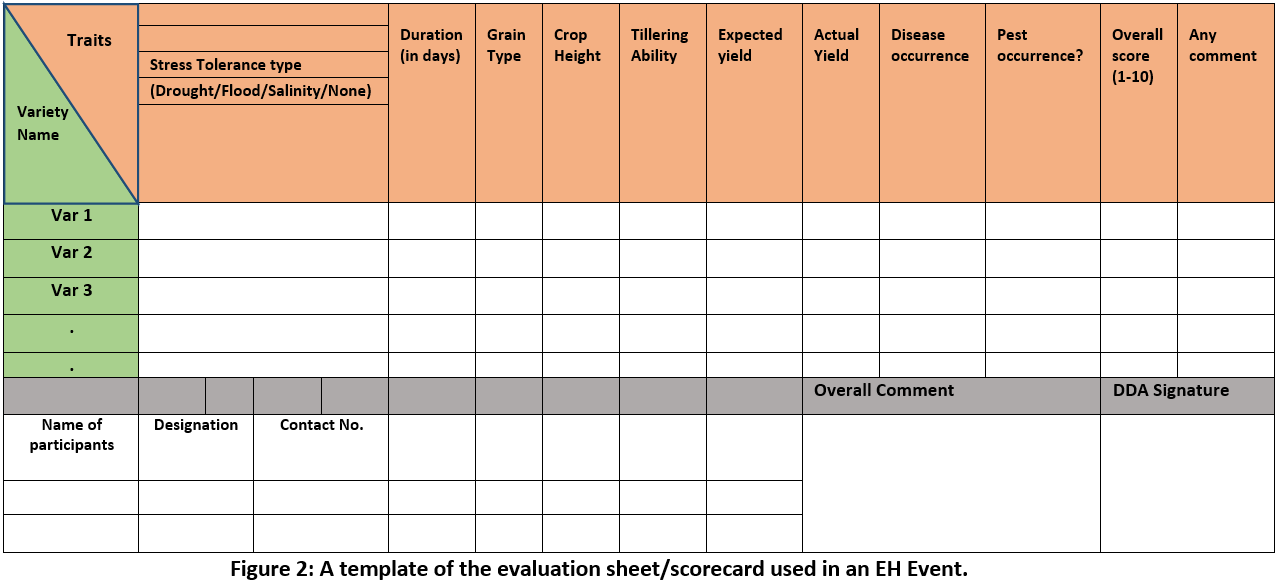
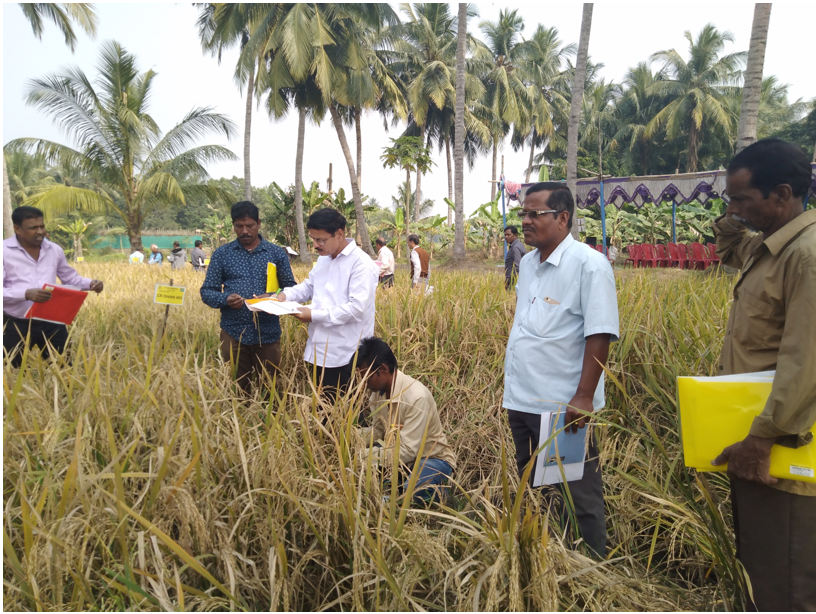

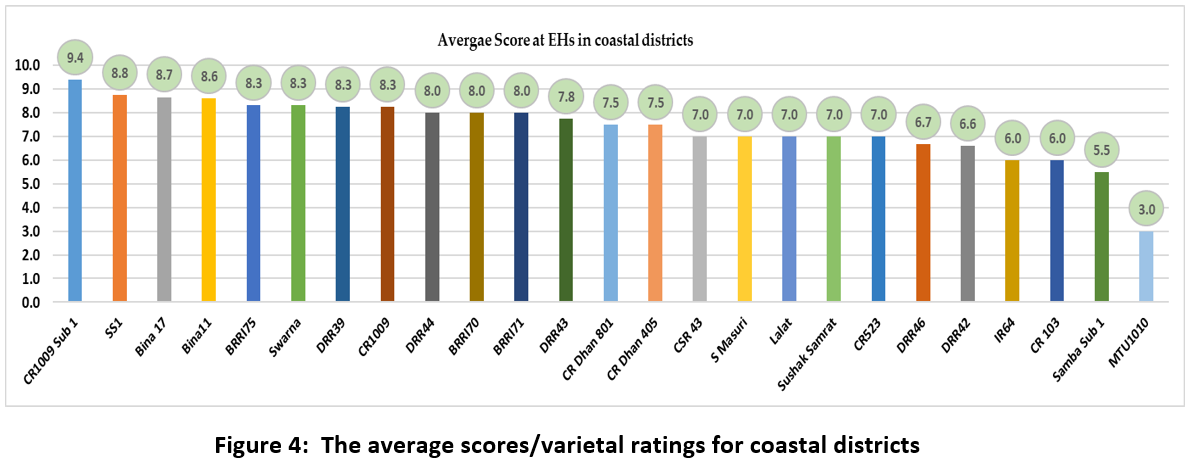
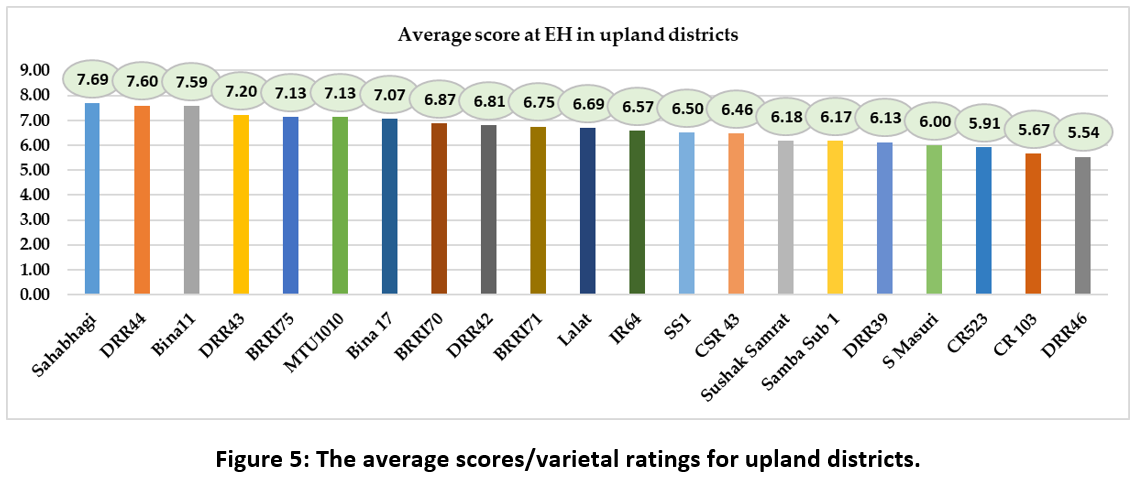
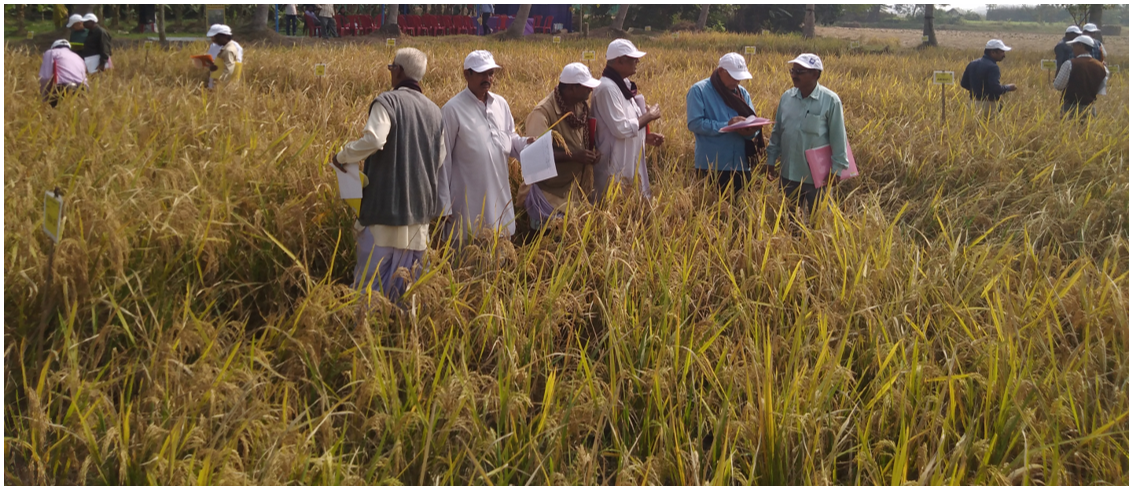

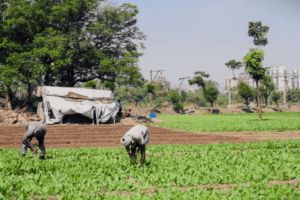

I complement the authors Swati Nayak and Mosharaf Hossain for giving this new approach of EH for evaluation and selection of seeds. One can imagine the quantum of efforts required to bring various stakeholders on to a common platform and involve them in this herculean task. I think that these findings if combined with factors which influence various stakeholders in evaluation and selection of seeds would be more meaningful. It is not clear whether these results are published in local language for the benefit of the farmers and extension personnel.
The stakeholder matrix (Fig 3) brought out interesting picture. The matrix revealed the very low interest as well as very low influence of the KVKs, University and Research institutes on varietal evaluation, selection, adoption, production etc. !
A small correction that the NDUAT is located at Faizabad, UP and not at Karnal”.
Thank you Dr Rao for your kind comments. Appreciate a lot for taking time to go through this. Yes this intervention do need a structured organization and strategic thinking to link key stakeholders, however it has also significant potential impact. In this first phase, we missed out one key stakeholder, Millers. Now in the next rounds of these interventions, Millers also going to play a key role.